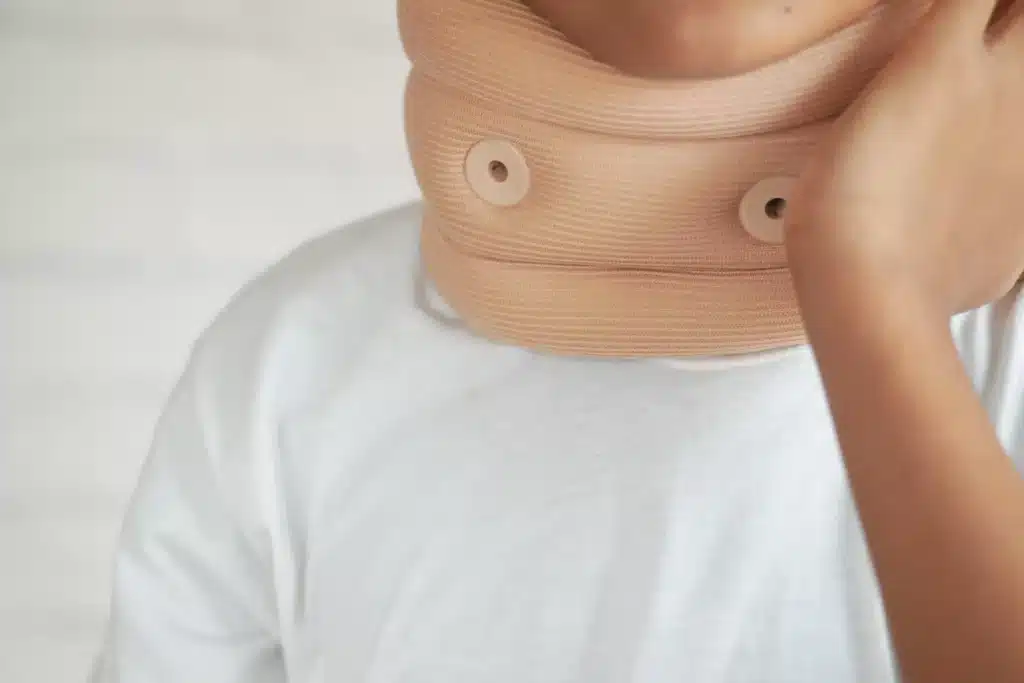
Table of Contents
ToggleThere are several reasons why a patient might choose to undergo spine surgery. One reason is that it can reduce pain and improve mobility by removing pressure on nerves or bones in the spine, which can cause damage over time.
Another reason is that it can help with spinal deformities like scoliosis or kyphosis (which refers to an abnormally curved spine). In some cases, surgery may also be used as part of a treatment plan for certain types of cancerous tumors located near the spine.
Spine surgery can also be used as part of a treatment plan for degenerative conditions such as osteoarthritis or disc degeneration.
Spine surgery is the treatment of choice for many spinal problems. For example, if you have a herniated disc in your back, which causes pain and muscle weakness, spine surgery may be able to remove or reduce the pressure on nerves in your spine and relieve your symptoms.
Spine surgery can also be used to treat spinal problems that don’t respond to other treatments or cause significant pain. One example is scoliosis–a condition that causes an abnormal curvature of the spine (usually at least 30 degrees).
Scoliosis can develop during childhood, adolescence or adulthood; however it’s most common among children aged 10-15 years old as well as young adults aged 15-25 years old.
The goal of surgical correction is usually pain relief rather than correcting structural deformity itself because this type of treatment provides long-lasting results with few complications.

If you’ve tried non-surgical treatments and your back pain has not improved, you may need surgery. Your doctor will help determine if this option is right for you.
Discuss other treatment options first. Your doctor will discuss all of your options with you before recommending surgery. Talk to him or her about any concerns or questions that come up during the consultation process so that both of you are clear about what to expect from each treatment option and how it might affect your life going forward.
Consider whether spine surgery is right for your situation–it’s a big decision! If possible, talk with people who have had similar procedures done before making any final decisions about what’s best for your health care needs.
The spine is a series of bones that make up the vertebral column. This is the part of your body that supports your head and upper body.
The spine allows you to walk, sit, and stand upright. It also protects your spinal cord, which contains nerves that send messages from your brain to the rest of your body.
Congenital spinal defects occur from birth and can affect any part of the spinal column. These include conditions such as spina bifida or scoliosis (curvature of the spine).
Spina bifida happens when the spinal canal does not close properly before birth, resulting in an opening in the back that exposes nerves and causes paralysis below this area.
Scoliosis occurs when one side of the spine curves more than normal while growing into adulthood.
If left untreated, congenital spinal defects can cause symptoms such as pain or difficulty moving around without becoming tired easily because they put stress on bones and muscles over time without proper support from medical devices such as braces or crutches.

If you have a spinal fracture, surgery may be necessary to stabilize the bones and prevent further damage. The type of surgery you undergo depends on the location and severity of your injury.
Spinal fusion surgery is used to treat fractures in which two or more vertebrae have been damaged. In this procedure, bone grafts are used to fuse together adjacent vertebral bodies (bones), creating an artificial joint between them that can heal over time.
Stabilization surgery involves inserting rods, wires or other hardware into a fractured spine in order to stabilize it during recovery. This type of procedure is often performed as an alternative to spinal fusion when there aren’t enough healthy bone fragments left after injury for successful fusing.
Instrumentation surgery involves placing screws into injured vertebrae so they can heal properly without shifting around during healing.
When young people have scoliosis, they may need to undergo spinal fusion surgery. This procedure is performed to straighten the spine, which can be curved in a way that causes pain or discomfort.
The procedure involves attaching two or more vertebrae together with artificial devices such as rods and screws. The devices are then secured in place with bone grafts taken from the patient’s pelvis or hip.
After spinal fusion surgery, it’s important for patients to follow their doctor’s instructions closely and use good posture for at least six months after treatment—even if they feel better immediately after the operation.
Disk injuries are among the most common causes of back pain in adults. They can be caused by trauma or repetitive stress, such as lifting heavy objects.
If you have a disk injury, you may experience back pain, numbness and weakness that worsens over time. Surgery can treat this problem by removing damaged disks or inserting artificial ones into your spine.
The surgery may be done through a small incision in your abdomen (minimally invasive) or through a larger incision on either side of the spine (open).
If you have chronic back pain, talk to your doctor about the best treatment options for you. You may need surgery if your back pain doesn’t improve with non-surgical treatments.
Spine surgery is the treatment of choice for many spinal problems like stenosis and scoliosis (curvature of the spine).
If you do undergo spine surgery, make sure that your surgeon has extensive experience with this type of procedure. Your surgeon should be board-certified in orthopedic surgery or neurosurgery and have advanced training with minimally invasive spine techniques such as endoscopic discectomy or microdiscectomy.
Spine surgery is an effective treatment for many types of spinal problems, including those that cause chronic back pain. If your other treatments aren’t working and you’re in a lot of pain, it’s worth talking to your doctor about what options are available.
After a spine surgery, you’ll have to take some time off from work, but there are ways to make the recovery period easier.
You can keep your physical activity level up by taking walks outside or swimming, and you can also try some simple exercises at home to keep your muscles healthy and strong.
When you do go back to work, take it easy and don’t push yourself too hard. If anything feels painful or uncomfortable after a few hours at the office, take another break—it’s better than risking long-term damage or complications from the surgery itself!
GET IN TOUCH +
285 Sills Road
Building 5-6, Suite E
East Patchogue, NY 11772
(631) 475-5511
184 N. Belle Mead Road
East Setauket, NY 11733
(631) 675-6226
GET IN TOUCH +
285 Sills Road
Building 5-6, Suite E
East Patchogue, NY 11772
(631) 475-5511
184 N. Belle Mead Road
East Setauket, NY 11733
(631) 675-6226
SUBSCRIBE TO OUR NEWSLETTER +
Send us a Google review. Click this link and let us know how we did!
Review us on Yelp too.